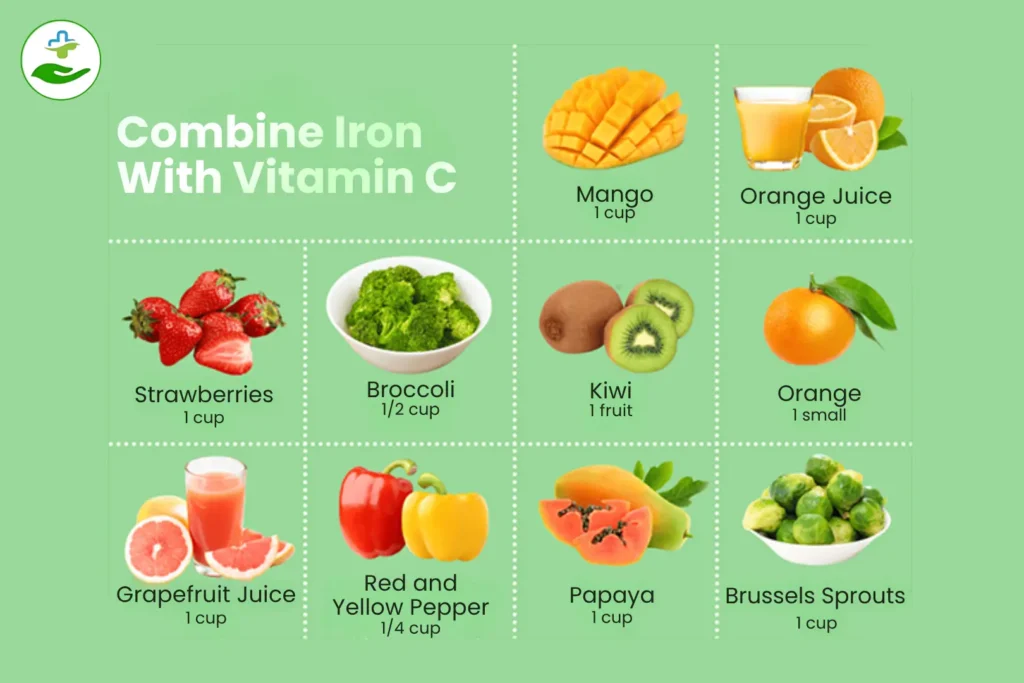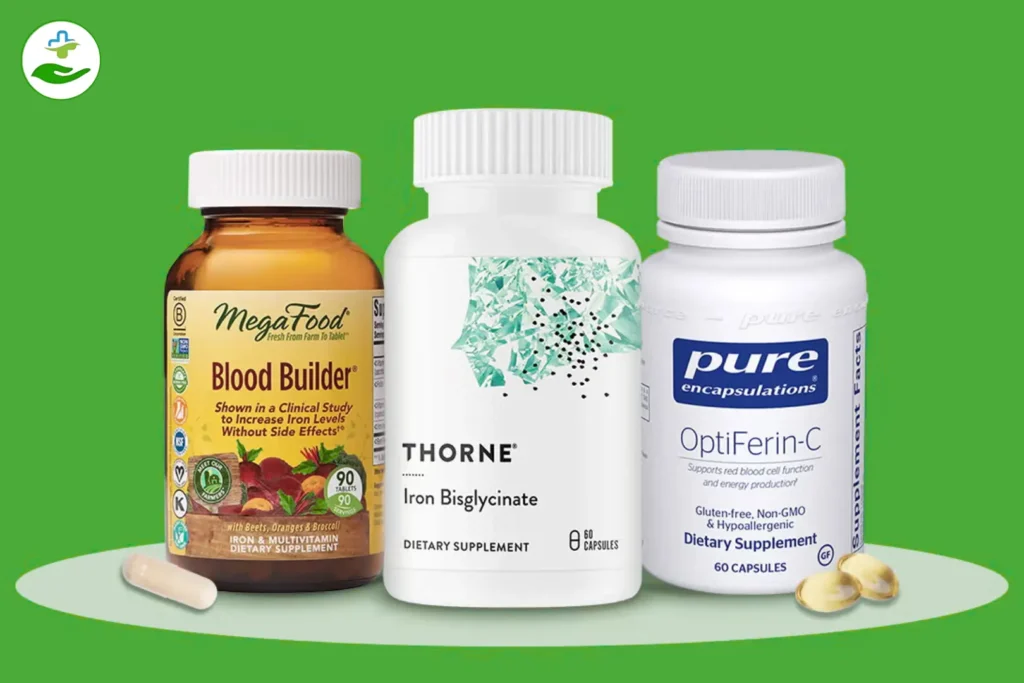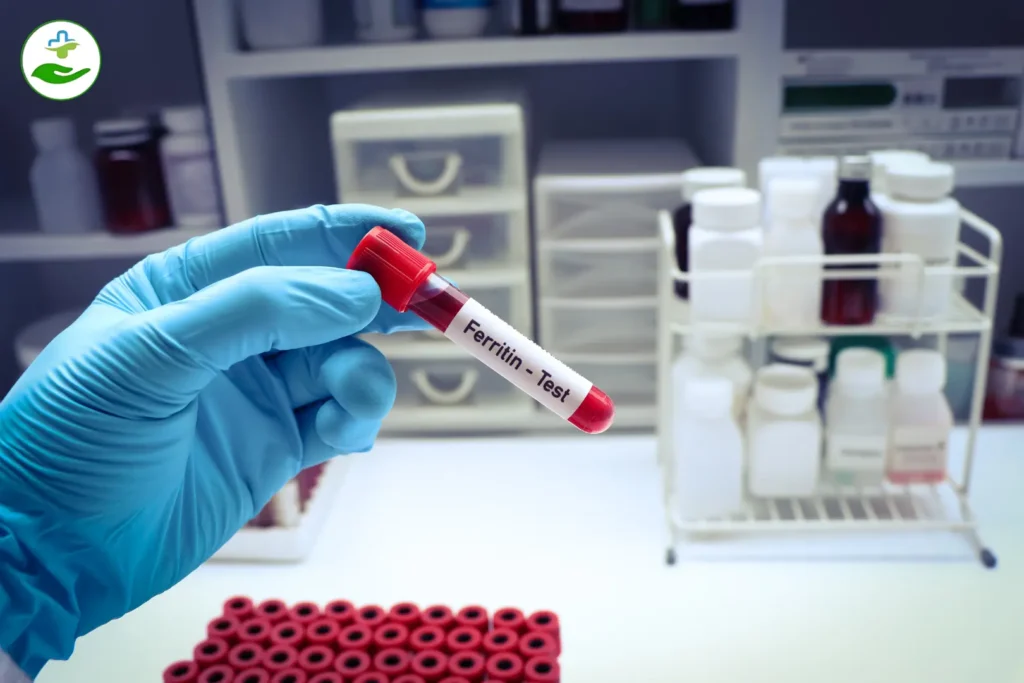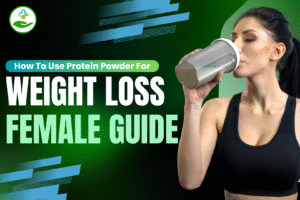Feeling constantly tired, weak, or low on energy? The reason might be hidden in your ferritin levels. Ferritin is the protein that stores iron in your body, and without enough of it, your cells struggle to function properly.
Many people search for how to increase ferritin because low ferritin can lead to fatigue, hair loss, and even anemia.
In this guide, we’ll explore simple yet effective diet and lifestyle changes to naturally boost your ferritin. From iron-rich foods to smart habits, you’ll discover practical ways to restore your vitality and energy levels safely.
What Is Ferritin?
Ferritin is a protein found inside your cells that stores iron and releases it when your body needs it. Think of it as your body’s “iron bank.” It helps maintain healthy red blood cell production and supports oxygen transport throughout the body.
When ferritin levels drop, your body’s iron reserves shrink, which can affect energy, focus, and even immunity.
Normal Ferritin Levels
Typical ferritin levels vary depending on gender and age:
- Men: 30–400 ng/mL
- Women: 15–150 ng/mL
- Children: 7–140 ng/mL
If your ferritin level falls below these ranges, it may indicate low iron stores or iron deficiency anemia.
How To Increase Ferritin Naturally
Eat Iron-Rich Foods
The simplest way to raise ferritin is through food. There are two types of iron:
- Heme Iron: Found in animal products like red meat, liver, poultry, and seafood. It’s easily absorbed by the body.
- Non-Heme Iron: Found in plant foods like spinach, lentils, beans, tofu, and quinoa. While healthy, it’s less readily absorbed.
Aim to include both types in your diet regularly.
Combine Iron With Vitamin C

Did you know that vitamin C can double your iron absorption? Eating iron-rich foods with sources of vitamin C — like oranges, bell peppers, or strawberries — helps your body absorb more iron efficiently.
Example: Add lemon juice to your spinach salad or enjoy citrus fruits after a meal.
Avoid Iron Blockers
Certain foods and drinks interfere with iron absorption. Limit absorption. Limit:
- Tea and coffee (contain tannins)
- Dairy products (high in calcium)
- Whole grains high in phytates
If you consume these, try spacing them out from iron-rich meals.
Cook With Cast Iron Cookware
Cooking in cast iron pans can slightly increase the iron content of your food — especially when cooking acidic dishes like tomato sauce.
Symptoms Of Low Ferritin

Low ferritin doesn’t always show obvious signs right away, but common symptoms include:
- Persistent fatigue or weakness
- Pale skin and brittle nails
- Shortness of breath
- Hair thinning or loss
- Dizziness and headaches
If you experience these symptoms, it’s important to get your ferritin levels tested.
Common Causes Of Low Ferritin Levels
Poor Diet And Nutritional Deficiencies
A diet lacking in iron-rich foods is one of the top causes of low ferritin. Skipping meat, leafy greens, or legumes means your body isn’t getting enough iron to store. Vitamin C deficiency can make things worse by reducing iron absorption.
Chronic Blood Loss
Heavy menstrual bleeding, internal bleeding (from ulcers or haemorrhoids), or frequent blood donations can lead to significant iron loss and lower ferritin.
Health Conditions Affecting Iron Absorption
Conditions like celiac disease, hypothyroidism, and inflammatory bowel disease can impair nutrient absorption, including iron, leading to chronically low ferritin levels.
Best Supplements To Boost Ferritin
When To Consider Iron Supplements
If your ferritin levels are significantly low or you have anemia, diet alone might not be enough. In such cases, your doctor may recommend supplements.
Common signs you might need them include persistent fatigue, pale skin, and brittle nails.
Types Of Iron Supplements

The most common forms include:
- Ferrous sulfate – cost-effective and widely used
- Ferrous gluconate – gentler on the stomach
- Ferric citrate – used for chronic conditions
Always follow your doctor’s dosage instructions, as too much iron can be toxic.
Supportive Nutrients
Vitamins and minerals that aid in increasing ferritin include:
- Vitamin C – improves absorption
- Vitamin B12 and folate – essential for red blood cell formation
- Copper and zinc – help balance iron metabolism
Lifestyle Changes To Improve Ferritin Levels
Manage Stress
Chronic stress can interfere with digestion and nutrient absorption. Try deep breathing, yoga, or meditation to support overall balance and improve your body’s ability to absorb nutrients.
Get Regular Exercise
Moderate exercise improves circulation and metabolism, helping your body use iron more efficiently.
However, be cautious — overtraining can lower ferritin by increasing inflammation and iron loss through sweat.
Avoid Overtraining
Intense workouts without enough recovery can strain your body and deplete iron stores. Ensure you rest adequately and eat balanced meals post-workout.

How To Monitor Ferritin Levels
Blood Test For Ferritin
The only accurate way to know your ferritin status is through a blood test. It measures the amount of ferritin in your bloodstream, reflecting your iron stores.
Understanding Your Results
- Low ferritin = low iron stores
- Normal ferritin = adequate iron storage
- High ferritin = possible iron overload (hemochromatosis)
If levels remain low after dietary and lifestyle changes, consult your healthcare provider for further investigation.
When To See A Doctor
If you’re constantly tired, experience rapid hair loss, or have irregular menstruation, it’s time to see a doctor. Unchecked low ferritin can progress to anemia or other health complications.
A healthcare professional can help identify underlying causes and suggest proper treatment — whether dietary adjustments, supplements, or addressing chronic conditions.
Key Takeaways On How To Increase Ferritin
- Eat balanced iron-rich meals with vitamin C.
- Limit iron blockers like caffeine and dairy during meals.
- Use cast iron cookware for small but consistent iron boosts.
- Stay active but avoid overtraining.
- Get regular ferritin tests to track progress.
By consistently following these habits, you can restore your ferritin levels naturally and feel more energized, focused, and healthy.
Conclusion
Increasing ferritin doesn’t have to be complicated. With the right combination of dietary choices, supplements, and lifestyle changes, you can naturally restore your body’s iron stores. Remember — patience is key. It might take a few months to see results, but your energy and health will thank you for it.
Always consult a doctor before taking supplements or making significant dietary changes. Your body thrives on balance, not extremes.
FAQs
Q1. How can I increase my ferritin levels fast?
Ans- To raise ferritin levels quickly, eat iron-rich foods like red meat, liver, and lentils paired with vitamin C foods such as oranges or bell peppers to boost absorption. If levels are very low, your doctor may recommend iron supplements for faster improvement.
Q2. What food is highest in ferritin?
Ans- While ferritin itself isn’t found in food, the foods highest in iron (which raises ferritin) include beef liver, oysters, chicken, spinach, lentils, and pumpkin seeds. These help your body store more iron as ferritin.
Q3. How do you treat low ferritin levels?
Ans- Low ferritin is treated by improving diet, taking prescribed iron supplements, and addressing underlying causes like heavy menstrual bleeding or poor absorption. Regular blood tests help monitor progress.
Q4. What is the danger of low ferritin?
Ans- If left untreated, low ferritin can lead to iron deficiency anemia, causing severe fatigue, shortness of breath, weakened immunity, and hair loss. Extremely low levels may affect heart and brain function.
Q5. What drink is very high in iron?
Ans- Drinks like spinach smoothies, prune juice, and beetroot juice are rich in iron. Pair them with a vitamin C source (like lemon or orange juice) to enhance absorption and raise ferritin levels naturally.







